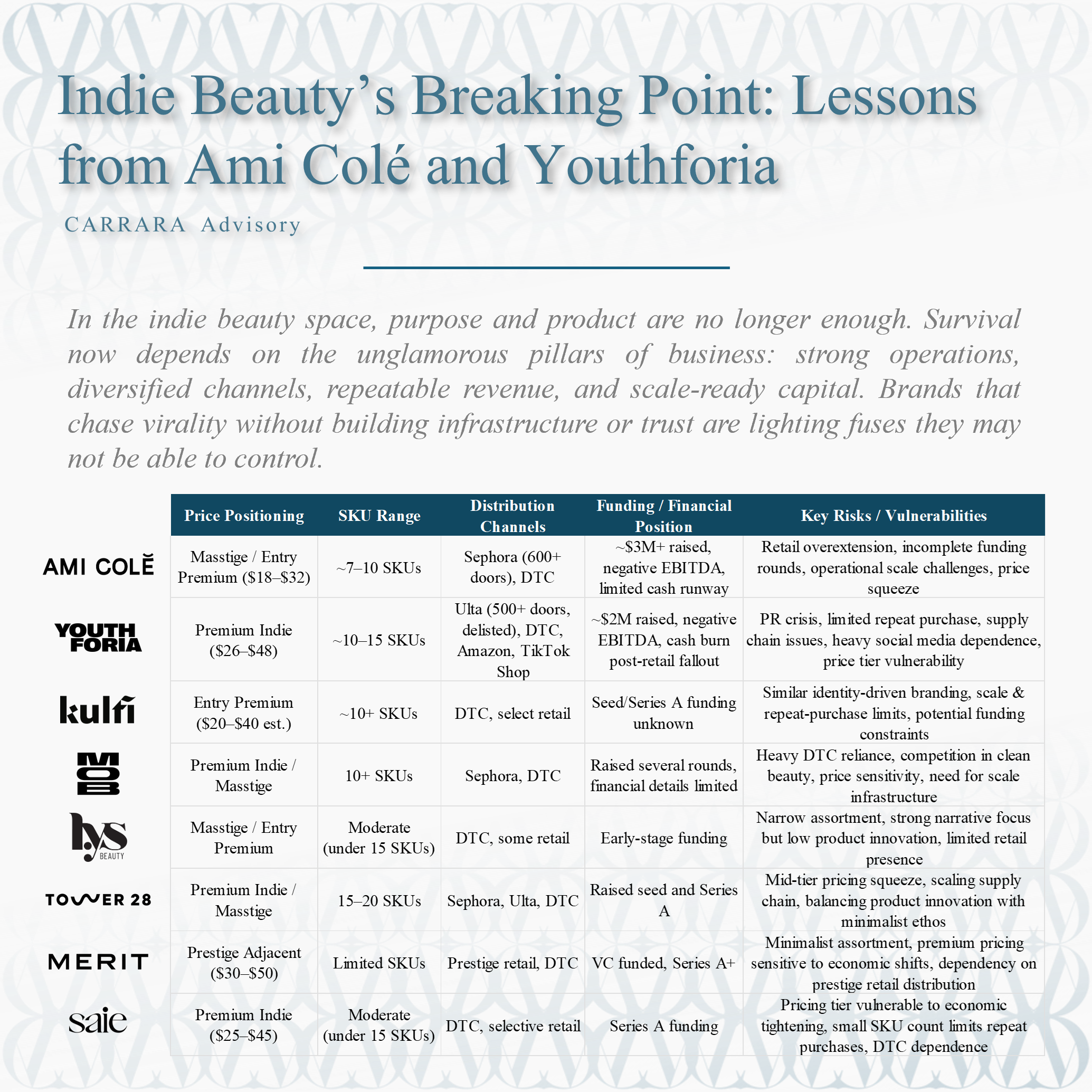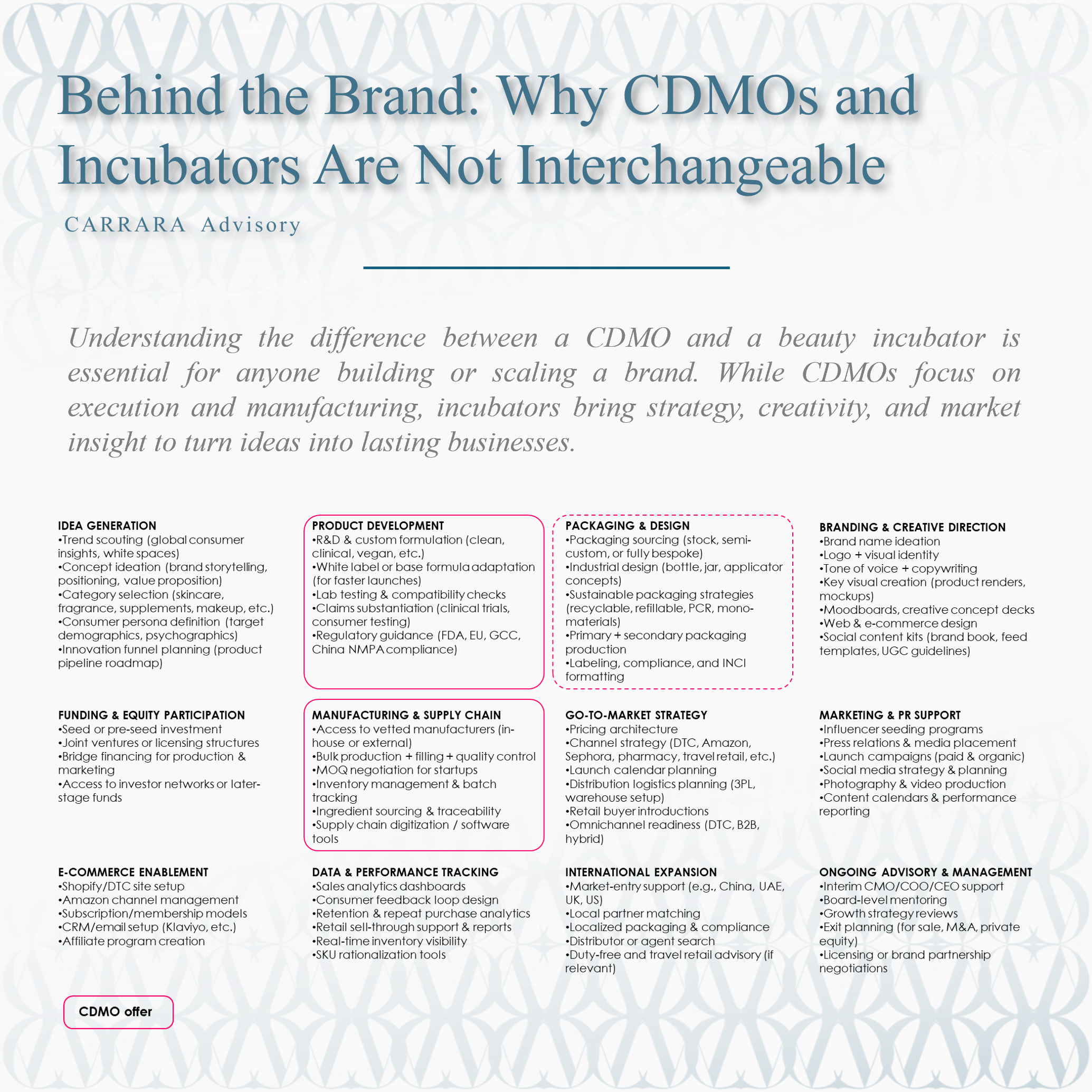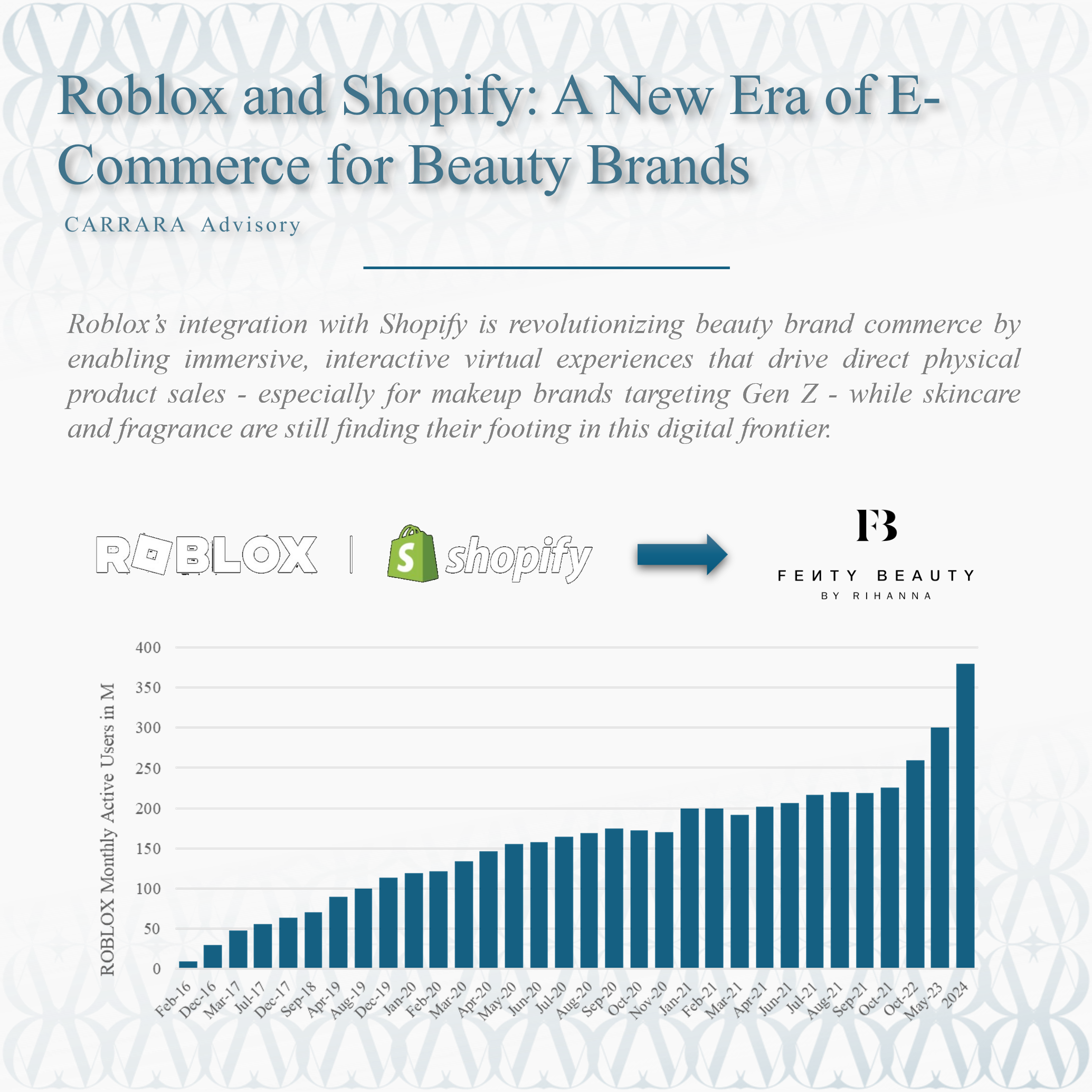
Intercos: The Unseen Force Powering the World’s Biggest Beauty Brands
Intercos doesn’t sell to consumers, yet it shapes what millions apply daily. With strategic acquisitions, a “glocal” footprint, and a laser focus on R&D, Intercos has gone from Milan startup to global force powering most of the world’s top 30 beauty brands and hitting €1B+ revenues despite major disruptions.

Indie Beauty’s Breaking Point: Lessons from Ami Colé and Youthforia
In the indie beauty space, purpose and product are no longer enough. Survival now depends on the unglamorous pillars of business: strong operations, diversified channels, repeatable revenue, and scale-ready capital. Brands that chase virality without building infrastructure or trust are lighting fuses they may not be able to control.

Behind the Brand: Why CDMOs and Incubators Are Not Interchangeable
Understanding the difference between a CDMO and a beauty incubator is essential for anyone building or scaling a brand. While CDMOs focus on execution and manufacturing, incubators bring strategy, creativity, and market insight to turn ideas into lasting businesses.

Stylist Roots, Celebrity Influence: The New Wave of Haircare Brands
Celebrity and hairstylist-founded haircare brands have skyrocketed in influence, evolving from niche salon lines to powerful lifestyle icons championing authenticity, inclusivity, and sustainability. This transformation is reshaping the beauty market.

Medik8: From Pangea Laboratories to a Skincare Powerhouse – The Story of Growth and Transformation
While all eyes are on the Rhode x e.l.f. deal, L’Oréal’s rumored €1B acquisition of Medik8 raises eyebrows - impressive growth, yes, but at a valuation at 7.8x revenues and 23.2x EBITDA looks quite stretched… unless we miss something!

Roblox and Shopify: A New Era of E-Commerce for Beauty Brands
Roblox’s integration with Shopify is revolutionizing beauty brand commerce by enabling immersive, interactive virtual experiences that drive direct physical product sales - especially for makeup brands targeting Gen Z - while skincare and fragrance are still finding their footing in this digital frontier.

Growth Slows, Costs Rise: The Beauty Industry’s Next Great Challenge
The beauty industry demonstrated resilience in 2024 but faces slower growth in 2025, with success relying on agility, technology investment, and navigating economic and regulatory challenges.

The Resilient Beauty Industry: Key Takeaways from CY 2024
The beauty industry demonstrated resilience amidst challenges, with agile companies leading growth, while major players maintained steady performance despite headwinds.

The Middle East: A $60 Billion Opportunity for Beauty Brands
The Middle East, a region rich in history and culture, is a rapidly growing market for the beauty industry, valued at over $46 billion and driven by rising disposable incomes, urbanization, and a young, tech-savvy population. Brands looking to succeed must navigate cultural nuances, regulatory requirements, and diverse distribution channels, while leveraging digital platforms to connect with consumers.

How Much It Really Costs to Launch a Beauty Brand
Launching a successful beauty brand to $5M in revenue within two years requires an investment of $3M to $8M, depending on the category (skincare, makeup, or fragrance) and key factors like brand positioning, formulation complexity, marketing strategy, and distribution model.

The Rise of the Chinese Beauty Empire and its Challenges
China's beauty market is booming, projected to surpass $77 billion by 2028, driven by digital innovation, rising local brands, and shifting consumer preferences. But it’s not all smooth sailing - brands face fierce competition, evolving regulations, and increasingly discerning customers.

The $14 Billion Beauty Revolution driven by AI
AI is revolutionizing the beauty industry, driving a projected market expansion from $2.9 billion in 2022 to $14 billion by 2031, with a CAGR of 19.3%. From personalized skincare recommendations to streamlined supply chains, AI is reshaping how brands innovate, engage consumers, and achieve sustainability.

Cracking the Code: How Niche Beauty Brands Win Investors
Niche beauty brands are transforming the investment landscape with their focus on authenticity, sustainability, and personalization. These brands offer high-growth potential for investors, however, attracting funding requires a compelling story, robust financial metrics, and clear scalability.

The fragrance landscape is changing in Spain
The fragrance landscape in Spain is undergoing significant transformation, driven by evolving consumer preferences, shifting product segments, and changing distribution channels. Luxury, niche, and sustainable fragrances are competing for market share, with e-commerce playing an increasingly prominent role. Additionally, generational differences, along with the urban vs. rural divide, are influencing buying habits, making Spain's fragrance market dynamic and diverse.

How Business Models Shape Makeup Brand Profitability
Makeup brands exhibit similar gross profit margins, but profitability varies significantly at the operating and net income levels due to differences in business models. Brands can be categorized into three clusters (scaled efficiency champions, niche luxury innovators, and celebrity-driven disruptors) each balancing product complexity, cost efficiency, and consumer engagement to shape their financial success.

Beauty vs. Fashion: Unpacking the Revenue Dynamics
While some brands, like Marc Jacobs and Moschino, are heavily reliant on beauty, particularly fragrances, others like Louis Vuitton and Tiffany & Co. focus more on fashion, with beauty contributing a smaller share. The balance between these segments, influenced by heritage, strategic partnerships, and regional preferences, is key to aligning beauty with a brand's identity and market opportunities.

European Beauty Retailers: A Deep Dive into Market Dynamics
How do Europe’s top beauty retailers balance store count and profitability? While giants like DM and Rossmann scale through extensive networks, smaller players such as Notino and Sephora excel with targeted strategies, showcasing the growing importance of e-commerce, sustainability, and experiential retail in driving store productivity.

What’s Next for Beauty? Key Trends and Innovations to Watch
Beauty trends highlight ingredient storytelling, cultural influences, sustainability, social media impact, and tech-driven innovation. Brands emphasize active ingredients like ginseng, draw from traditions like K-beauty, prioritize eco-conscious practices, leverage viral trends, and integrate cutting-edge science with tools like skincare devices.

Global Beauty Giants Navigate China’s Transforming Consumer Landscape
China’s beauty market, once a global growth powerhouse, is now presenting unprecedented challenges for the industry. Economic uncertainty and evolving consumer preferences have slowed demand, leaving even the biggest brands grappling with soft performances. Leading beauty companies are reimagining their approaches—focusing on localized innovations, strengthening digital engagement, and emphasizing sustainability to stay competitive.

The Art and Science of Niche Fragrance Collections
Niche fragrance brands captivate clients with unique, exclusive scents, but how sustainable are their extensive collections? Our analysis reveals three performance tiers, highlighting the balance between collection size and productivity. Larger brands often succeed with fewer fragrance variations, but history shows that efficiency and focus remain key.